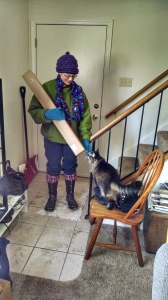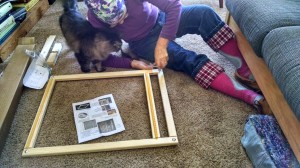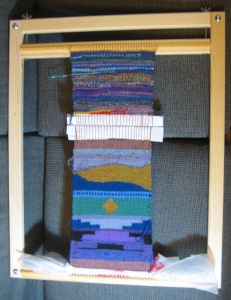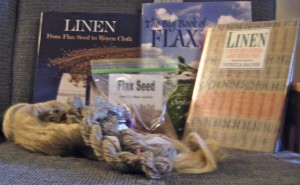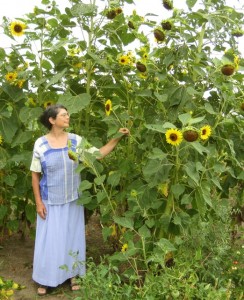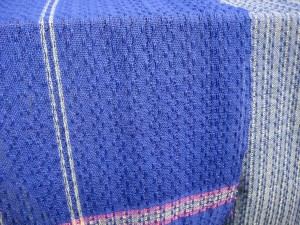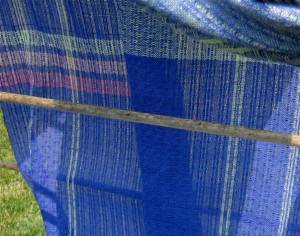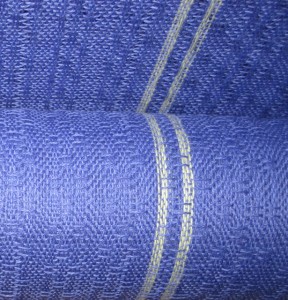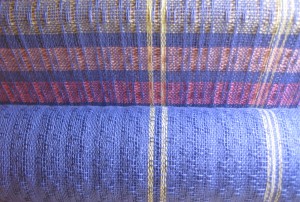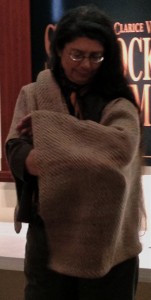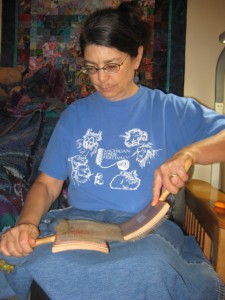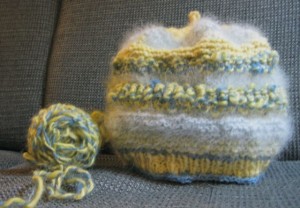 In the many months since I last posted I have been having plenty of fun with textiles, including lots of small knitting projects with my yarn that I’ve spun over the years. My latest project I call the Web of Life Hat because it owes its origins to so many people.
In the many months since I last posted I have been having plenty of fun with textiles, including lots of small knitting projects with my yarn that I’ve spun over the years. My latest project I call the Web of Life Hat because it owes its origins to so many people.
The design started with the yarn shown next to the hat in the photo – an exuberant bulky skein my friend Beth Engelbrecht-Wiggans made plying yarn she spun with yarn spun by her mother in law. Beth’s yarn is dyed with indigo and goldenrod, so I combined it with selections from my handspun that I had dyed with natural dyes, including indigo, weld, and carrot tops.
The pale blue fuzzy yarn embodies another chain of family and friendship. It is the fur of a Great Pyrenees dog owned by someone I’ve never met. Our link is through my mother in law’s college roommate, and now through the yarn and hat.
Once I started thinking of the chain of relationships that went into the hat I had to add all people who taught me about knitting, spinning, and dying, and our ancestors who domesticated dogs and sheep and invented ways of making their fur into yarn, adding color, and making clothing.
